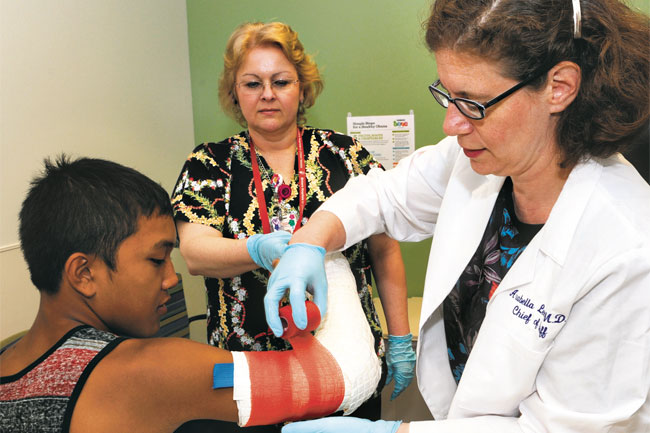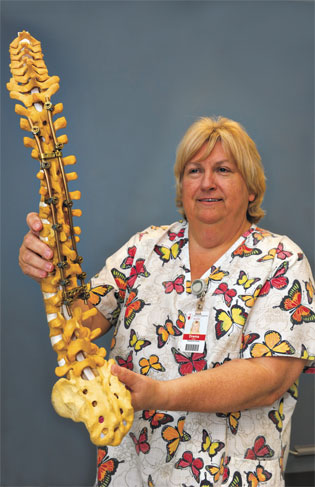Treating Bone Ailments In Keiki
Dr. Arabella Leet
Chief of staff at Shriners Hospitals for Children in Honolulu
Where did you receive your schooling and training?
I went to medical school in New York City at Columbia University College of Physicians and Surgeons. My residency was at the University of Minnesota, and I then did a fellowship in pediatric orthopedics at Dupont Children’s Hospital in Delaware and at Children’s Hospital Los Angeles.
How long have you been in practice?
Since 1998. I spent the last decade of my practice at Johns Hopkins Hospital in Baltimore.
120808-dih-03
What do you do at Shriners Hospitals for Children-Honolulu?
At Shriners hospital I see patients in the office, perform surgeries and have administrative responsibilities for the hospital as the chief of staff. I am finishing several research papers and hope to start working on more research in the future.
You have a background in cerebral palsy. It’s something we hear about or notice the donation box on the grocery counter, but we don’t necessarily know what it is. What is cerebral palsy?
Cerebral palsy is defined as a brain injury in a child less than 2. Cerebral palsy can have many forms and involve just a few limbs or all the limbs. Some children with cerebral palsy have cognitive problems while others do not.
How is it acquired?
There are many etiologies. Some involve problems with pregnancy, and many children with cerebral palsy were born prematurely. Other times it is not clear why a child will have cerebral palsy.
What are the symptoms?
The injury to the brain results in abnormal signals being sent to the muscles from the nerves. Children then can develop muscle imbalance, abnormal muscle function or bone deformity.
What treatment options are available?
Cerebral palsy is a disorder of the brain, and so far we are not able to treat the brain problem.
Instead, as orthopedic surgeons, we work on treating the problems the brain injury causes so that the children we treat can function better. I really enjoy watching the kids grow up and get better. Because their surgeries have helped them, they are able to do things that they could not do before.
You also treat osteo-genesis imperfecta and fibrous dysplasia. What are they, and can they be treated or cured?
Osteogenesis imperfecta also is known as brittle bone disease. It’s a genetic disorder that results in bones that are bent and soft. There is no cure, but medications and rods placed in the legs help children have fewer fractures and an easier time walking.
Fibrous dysplasia also is a genetic disease and affects the stem cells that differentiate or become bone cells – these cells become fibrous tissue instead of making bone and the patients have areas of bone which, like osteo-genesis imperfecta, are able to bend or break. Treating fractures or deformities in both of these conditions is the job of the orthopedist until we can figure out how to cure the genetic deficiencies.
Is there anything else you would like to mention about these conditions?
Both are rare conditions, but the children who have these diseases are impacted by frequent fractures and surgeries. In both conditions the children are normally intelligent. Research to help cure diseases such as cerebral palsy, osteo-genesis imperfecta and fibrous dysplasia is so important, and making sure that in the current health system physicians can still work to find the cures to the diseases affecting their patients is something the public should be aware of and support.







